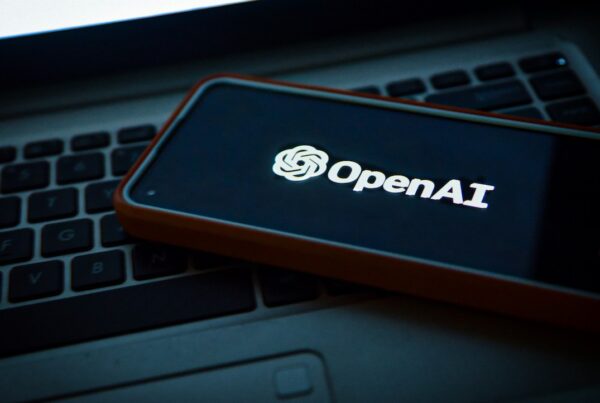
The workforce is a living, breathing entity that changes with each generation. The speed of this change has never been more significant than now. There are several key factors driving this accelerated change:
- Labor scarcity faced by industrialized nations in a post-pandemic world
- The digital revolution experienced by Gen Y millennials and Gen Z Zoomers—the two generational cohorts that represent the future of the modern workforce.
No workplace generations have been studied more carefully. We know almost everything about them, thanks to research universities, the Big 4 accounting firms, the Big 3 management consulting firms, and think tanks. Wise employers will look to the needs of these younger generations to target their employee retention efforts. Mentorship, career and professional development, and working for a management team that cares about them personally top the list of priorities gleaned from multiple surveys across the Millennial (45 and under) and Zoomer (25 and under) crowds.
New-Age Mentorship
Traditional mentorship programs still exist, of course. However, mentoring now goes beyond the traditional model, where more experienced (and typically older) workers assume the role of teacher and advisor. Such traditional mentoring opportunities were formal, hierarchical, and prescriptive in nature where the mentee was expected to listen and learn in a one-way transfer of information. That’s no longer the case in new-age mentorship programs. While the aim remains to provide guidance and support to help someone reach their full potential, modern mentoring’s goals are much broader. A few central components of modern mentoring include:
- Skill building
- Networking
- Gaining greater organizational exposure
- Addressing mentees’ career and professional development needs and goals
New-age mentorship is more collaborative, diverse, and asynchronous in nature, aligning it with today’s needs for more agile and adaptable work environments. It assumes that all generations can benefit from the mentoring relationship with the focus being on giving rather than getting, sharing values, and gaining focused training and expert insights in real-time, bite-sized chunks rather than via formal year-long commitments.
The beauty of new-age mentorship programs is that learning goes both ways, and all participants benefit. Here’s how companies are experimenting with new-age mentoring programs and how your organization might want to consider adopting and rolling out its own program.
Reverse Mentoring
Reverse mentoring involves more junior members of the workforce “training up” more experienced coworkers on newer technologies, exposing them to the most current digital media platforms and the like. With so much changing so quickly, many older and more senior coworkers are sponges for new information, and the younger cohorts can thrive in sharing their know-how and expertise.
Peer-to-Peer Mentoring
Not all organizations have the infrastructure to assign more experienced professionals to teach earlier-career workers the important techniques and shortcuts that increase efficiency and get better results. A productive work around is to recognize individual achievement by recognizing someone’s expertise in a given area and asking that individual to mentor peers. Opportunities to mentor or serve as an onboarding “buddy” are often the first step in any “high potential” (Hi-Po) or emerging leader program.
Team or Group Mentoring
Group mentoring occurs between a group of mentors and mentees rather than just one mentor and one mentee at a time. It allows for a diversity of thoughts, ideas, and voices. Creating a broader sense of collective wisdom, group mentoring capitalizes on everyone’s expertise rather than the experiences of one mentor alone. In team mentoring, one individual may take on a more dominant role in overseeing multiple mentees, or the program can be reversed where a singular mentee has multiple mentors. The intentional variety of feedback and opportunity to develop stronger team alignment is core to team mentoring’s value proposition.
Flash or Speed Mentoring
Upskilling often relies on exposure to new perspectives, and flash mentoring allows employees to connect with a mentor for only one or two sessions. It’s all about quick and deep skill acquisition and less about career guidance. Virtual or in-person “coffee chats” allow for greater networking and organizational exposure opportunities while providing quick insights into solving common challenges.
Digital Mentoring
Wait, there’s an app for that! Online mentoring software platforms are springing up as we speak and are particularly well-suited to today’s remote, hybrid, and satellite workplaces. Such apps help employees foster meaningful relationships and maintain personal connections, even while working from home or operating in different time zones. They’re intended to establish deeper connections between mentors and mentees, drive greater loyalty and connection to the organization, and alleviate much of the isolation, loneliness, and anxiety that particularly plagues the younger Gen Z workforce.
There are other approaches that include “mentoring constellations,” “mentors of the moment,” and similar, short-term mentorship models. What these new-age programs have in common is their intended purpose of enhancing relationships, upskilling individuals and teams, and building a stronger sense of connection, purpose, and shared values.
How to Get Started
If you’re looking for an opportunity to introduce new-age mentorship programs to your organization, start with these three steps:
- Have your team watch the movie “The Intern” with Robert DeNiro and Anne Hathaway together. It’s a fun, funny, lighthearted, but touching movie that will get everyone on board with the spirit of what you’re trying to accomplish.
- Do a little research beyond this blog article to determine what kinds of new-age mentoring opportunities might work best for your organization, and bring your initial findings to the potential participants themselves for their input and buy-in.
- Launch your first program with a small group to gain traction, monitor feedback, and develop best practices and guidelines moving forward in preparation for the broader rollout.
New-age mentorship often involves more egalitarian relationships where both parties can learn from one another. It’s about giving as much as getting. This flexible and dynamic approach to team and individual development involves elements of coaching, mutual support, networking, and skill-sharing. You can’t get a much better return on investment for your retention dollar. If all goes well, the momentum will take care of itself, the buy-in will be strong, and your program will be fully up and running in no time.
Paul Falcone is a bestselling HarperCollins Leadership author of 17 books, a long-time columnist for SHRM, the former CHRO of Nickelodeon, and the principal of Paul Falcone Workplace Leadership Consulting, LLC in Los Angeles.







